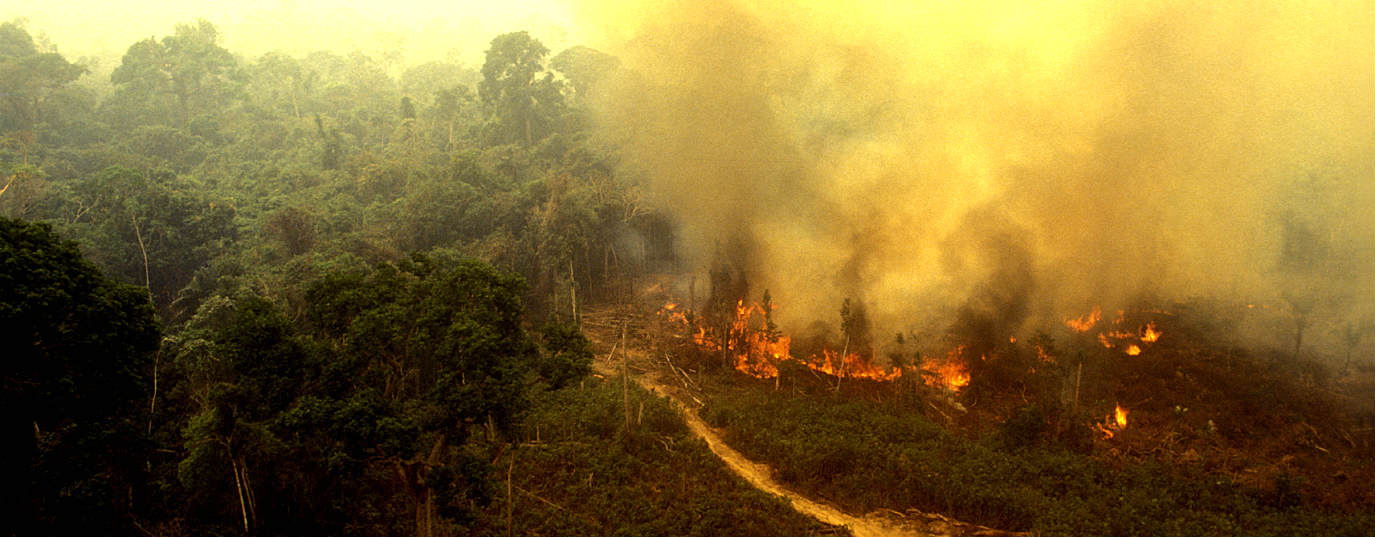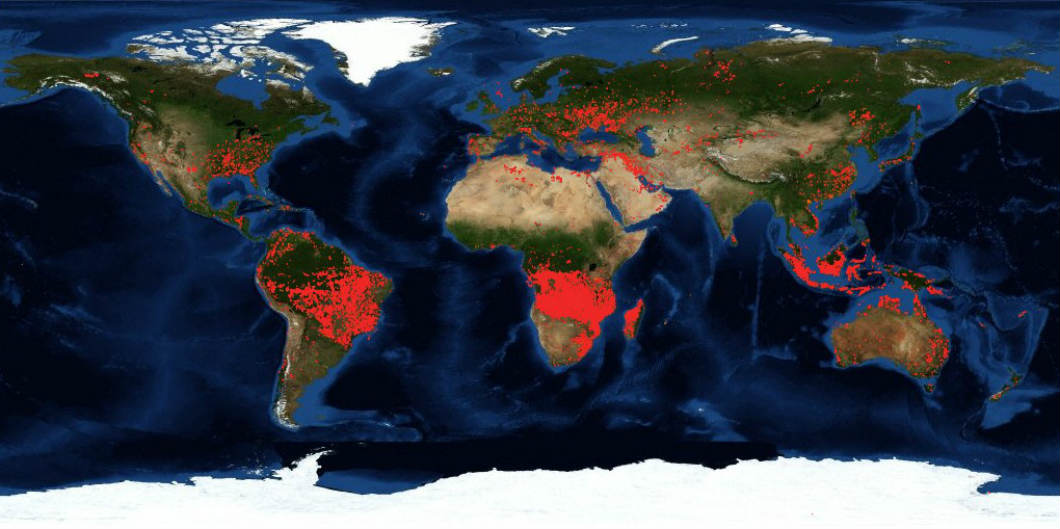The other Amazonias that also burn
It’s not just the Amazon burning this summer, many areas of the planet are suffering one of the greatest forestry tragedies in recent years.
The Amazon is ablaze. This vast region is suffering from thousands of fires spreading through its rainforests, mostly in Brazil and Bolivia, an environmental tragedy that has alarmed people the world over.
Forests are one of the most important natural carbon sinks on the planet for containing global warming. Plants absorb CO₂ from the atmosphere through photosynthesis and return oxygen. The Amazon region is an essential weapon in preventing the temperature of the planet from rising further. But not only that, the Amazon is home to a huge sociocultural wealth, with hundreds of remote indigenous tribes and an ancient culture whose legacy might be lost.
They are thought to be the worst fires in the region since 2010, according to data supplied by organizations dedicated to the observation of natural disasters. What is certain, though, is that they are not sporadic. And, even less, they are nothing new.
August 2019 has been a prolific month for forest fires not only in Europe but also in Amazonia, even though the latter is a tropical rainforest with high humidity. The fires are peaking due to the lack of rains during this period, and this in the planting season.
This has not happened by chance. According to the Amazon Environmental Research Institute (IPAM), many of the outbreaks in this region have been caused deliberately by small bands of people who stand to benefit from the destruction of forest areas so that they can assign them for agriculture. The tragedy of the Amazon fires, which are of global report and a threat to the climate change fight, have a political and economic component that is screaming for governmental solutions able to stop this environmental disaster in its tracks.
And this is another question that goes to the heart the problem. The Amazon is one of the world’s richest assets and, as a result, there is a debate about who exactly is responsible for protecting it, given that the fires are a threat to the climatic balance of the planet. As such, the G7 agreed to make available a fund of USD 22 million to fight the fires. Meanwhile, the debate continues.
More fires ablaze in Africa than the Amazon
But not everything on fire lies in the Amazon. The great droughts and high temperatures (this July was the hottest ever recorded) form perfect conditions for the production of forest fires and their rapid propagation. Join to this the fact that some of these fires are being deliberately started and the outlook is desperate.
Here you can see a real-time map of active fires by FIRMS, the NASA department dedicated to monitoring them.

Presently, Africa is more alight than the Amazon. Some 10,000 fires are active in the Congo and Angola alone. These are often caused by the use of ancient methods for managing crops, hunting and grazing. It has been calculated that around 10% of these fires are still out of control and responsible for 90% of the burned surface.
The European Union has also come up with some worrying data, recording more than 1,600 blazes that have each destroyed over 30 hectares, four times the annual average of the previous decade.
Fires in the Arctic, increasing like never before
Surprisingly, perhaps, fires at this time of year are also a concern in the Arctic due to atmospheric factors such as dry storms and the warm weather. Unusually high temperatures and low humidity on the ground have unleashed an unprecedented large number of fires in the region this year.
Information from Copernicus, the European Union’s Earth Observation program, shows that, since July, fires have been wreaking havoc in Siberia, Alaska, Greenland and northern Canada, and another worrying record has occurred: the Arctic’s longest forest fire ever recorded.
Meanwhile, the smoke from forest fires in Siberia has extended over a greater distance than the area of the European Union, and fires in Alaska have emitted over double the amount of carbon dioxide this US state emits in a year from burning fossil fuels.
Fires and climate change
These fires are not just a natural disaster because they devour everything in their path, but also because they emit a large quantity of carbon dioxide to the atmosphere, one of the greenhouse gases responsible for global warming.
Indeed, say the experts, the Amazon fires could directly influence the climate of South America, causing less rain and thus a more intensive dry season. The Arctic forest fires are also alarming from the viewpoint of climate change, since the particles they emit will probably settle into the ice, darkening its color, a phenomenon that will mean sunlight will be absorbed rather than reflected, aggravating the problem of global warming.
As such, the long-term objective committed to by countries in the Paris Agreement - to maintain the increase in global temperature to a maximum of 1.5 °C with respect to the pre-industrial era - could be under threat from the escalation of fires all over the planet. Hence the urgency with which governments are trying to tackle the environmental problem at the international level.
Sources: Atmosphere Monitoring Service, BBC, Público, El País, RTVE, FIRMS

